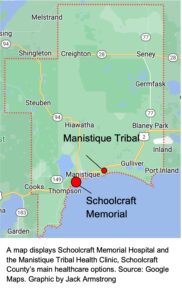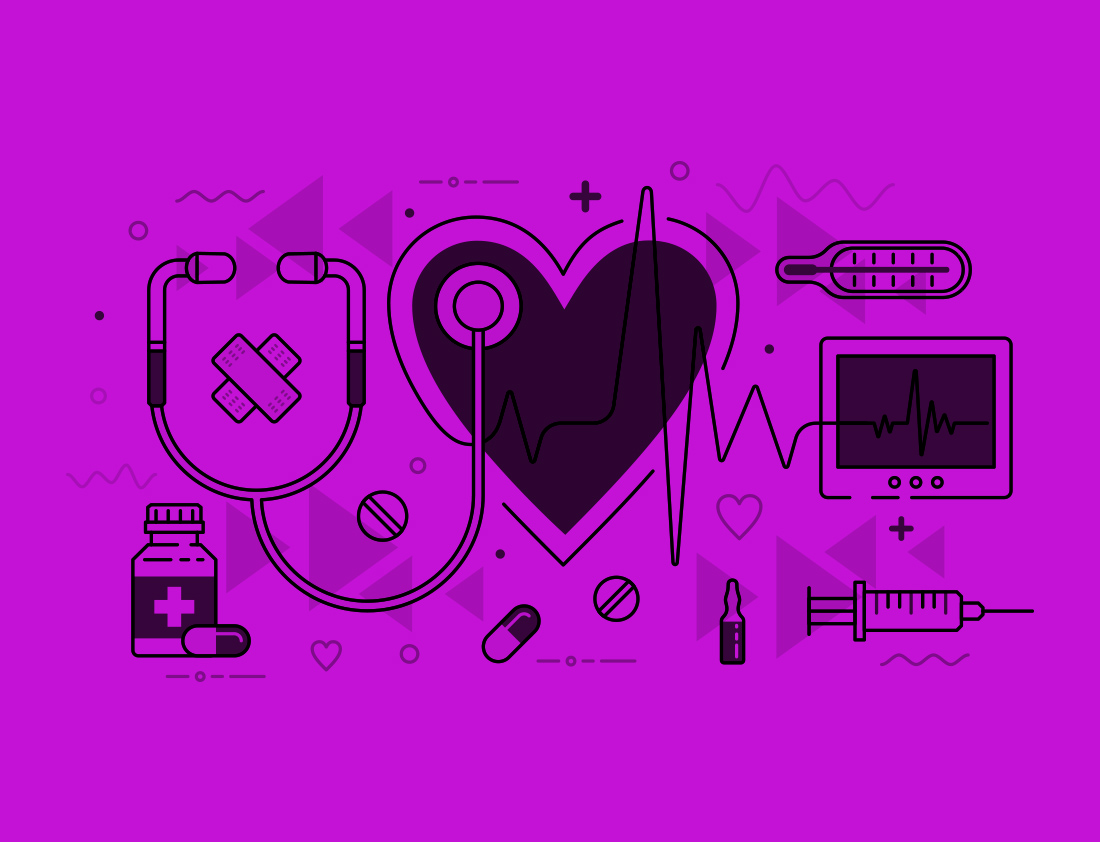How Michigan’s Graying America Community Narrows Gaps in Rural Healthcare
As in many rural counties, Schoolcraft County’s remote location in Michigan’s Upper Peninsula means getting healthcare can be challenging work — but residents make it happen through local programs, personal relationships, and neighbors.
More than 8,000 people call Schoolcraft County home, including the Sault Ste. Marie Tribe of Chippewa Indians. More than 9% of the population is indigenous. The county is home to just under seven people per square mile, compared to Michigan’s 178 people per square mile.
Its rurality makes healthcare a challenge. The county’s single hospital, Schoolcraft Memorial Hospital, is in Manistique, the county’s only city.
Schoolcraft resident and pastor B.J. Ash said this aspect of travel is a known concern when living in this type of community, and people know what they’re getting into when they move into the area. “We’re used to driving an hour or two to get something we need,” said Ash. “It’s the price of living in the community we live in.”
Rural Challenges Produce Unique Solutions
In Schoolcraft County, there is only one physician available for every 1,350 residents. Nationally, the ratio is one physician for every 1,309 residents, according to the 2023 County Health Rankings & Roadmaps.
Schoolcraft’s healthcare access problems sometimes require residents to wear many hats. Ash, in addition to serving as a pastor, is a member of the Sault St. Marie tribe of Chippewa Indians and chief of a local volunteer fire department. He also works with Schoolcraft emergency services and the local Cub Scouts pack — and said the hospital sometimes calls and asks him to transport patients.
When patients have a procedure involving sedation, they are legally not allowed to drive themselves home afterwards. Unless they have someone able to accompany and drive them, more than an hour of driving in some areas, patients have no way to get home.
“You get someone in need like that, you start calling around and we’re a small enough community somebody is bound to know the person and say, ‘Yeah, I’ll give him a ride,’” Ash said.
The hospital also partners with the local public transit to offer a grant program to those who need assistance getting rides to and from the hospital for appointments or procedures.
Manistique, Schoolcraft’s only city, is home to Schoolcraft Memorial Hospital, a 12-bed facility serving as the area’s only provider for family medicine and emergency care. Some residents are also able to find care at the Manistique Tribal Community Center, but most care is provided by the hospital.
The hospital also needs to find ways to bridge distance. It’s an hour away from the furthest county, which threatens to delay emergency situations. Schoolcraft Memorial faces a higher percentage of “internal medicine challenges,” such as heart attacks and cardiac issues, said Andy Bertapelle, CEO of Schoolcraft Memorial.
Marketing Director Sarah Giles said the hospital provides at-home care to assist residents who are homebound or unable to travel to the hospital. Bertapelle said the team is typically out all day traveling throughout the county, including on weekends. The service recently received a five-star rating from the Centers for Medicare and Medicaid Services for patient satisfaction.
The hospital typically uses between eight and 10 beds at a time, said Bertapelle. It’s common for the hospital to reach capacity and transfer patients out, he said.
Ash said relationships within the community help ease some of these difficulties. “If you come in through the doors of the hospital, chances are the people there already know you,” he said.
Schoolcraft Memorial is considered a critical access hospital, a medical facility in a rural or underserved community. In 2016, Schoolcraft Memorial Hospital was rated in the top 20 critical access hospitals in the nation by the National Rural Health Association.
National Implications
 Schoolcraft isn’t alone. Data show many rural counties in the United States face unique struggles in providing senior residents with specialized healthcare.
Schoolcraft isn’t alone. Data show many rural counties in the United States face unique struggles in providing senior residents with specialized healthcare.
The American Communities Project classifies Schoolcraft as a Graying America community. These communities have at least 25% of the population over the age of 65 and only 18% of the population under the age of 18. Numbers from the U.S. Census show that nearly 29% of the county is 65 years old and over, compared to 17.3% nationwide.
These counties have an additional 366 people per primary care physician than the national average.
Most of Schoolcraft County is medically insured. Approximately 10% of residents are uninsured, equal to the national average, according to the County Health Rankings.
Schoolcraft Bridges Gaps
Schoolcraft Memorial Hospital CEO Bertapelle said residents are happy with the variety of services it provides, including several health specialists and surgeons, a visiting pediatrician, and a “robust” outpatient clinic.
Schoolcraft residents know the disadvantages of living rural and they work around it, Bertapelle said. For example, residents schedule doctor’s appointments on days they need to go to town for groceries. He said most urgent cases are related to internal problems and not traumatic accidents and residents don’t delay seeking care to avoid traveling.
The county’s rural location also has another advantage — its residents are tough. “It’s a rural culture thing, you know rural America, we’re hardy folk,” Bertapelle said. “We take care of ourselves.”
This is part of a series of posts from students at the Michigan State University Journalism School. The students will be covering four counties around Michigan during the 2024 campaign for the Detroit Free Press working with the American Communities Project typology.
